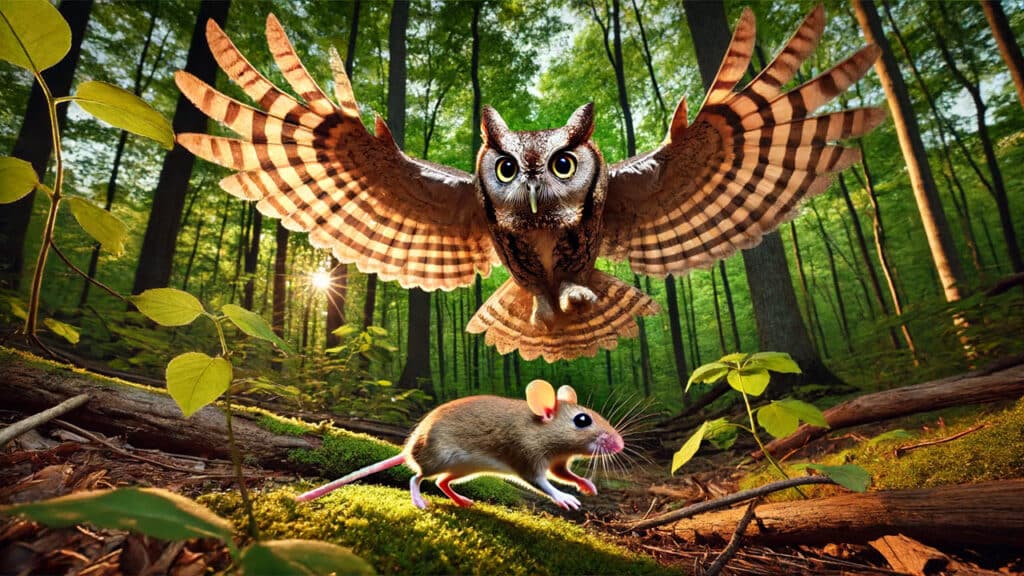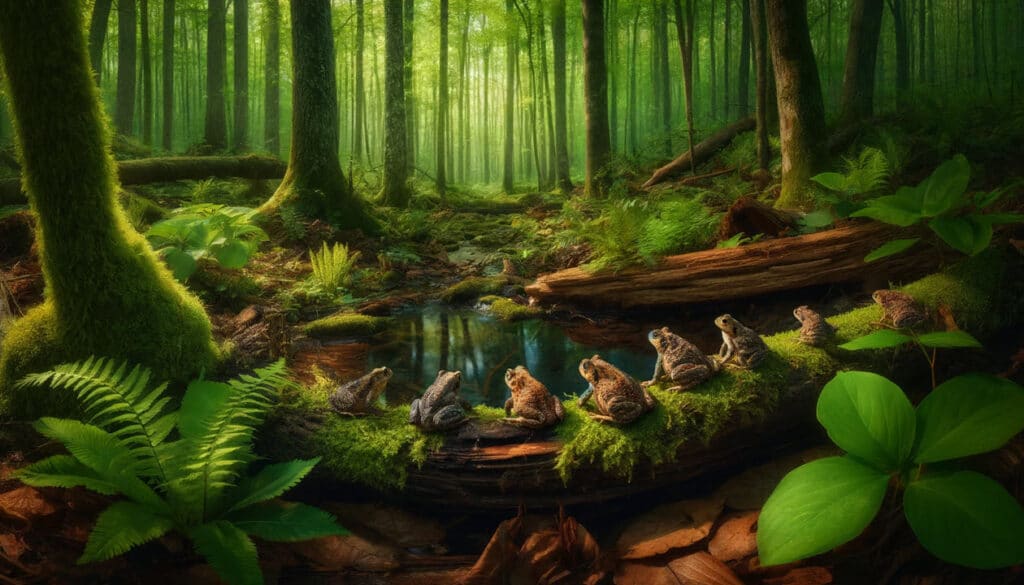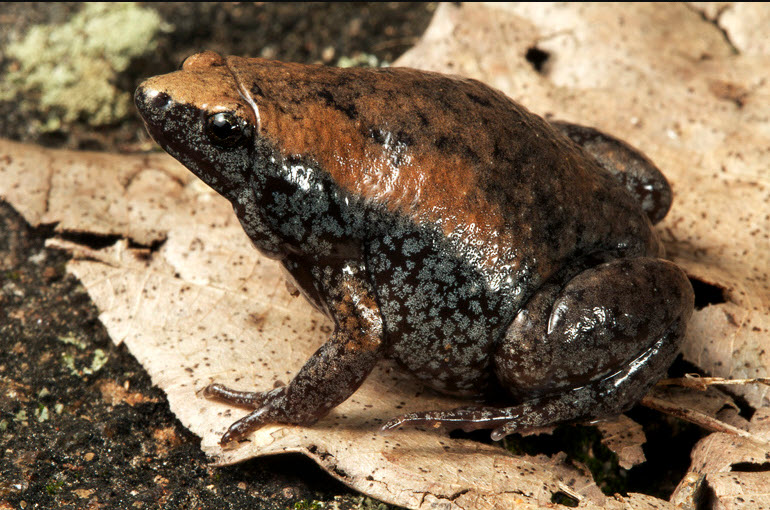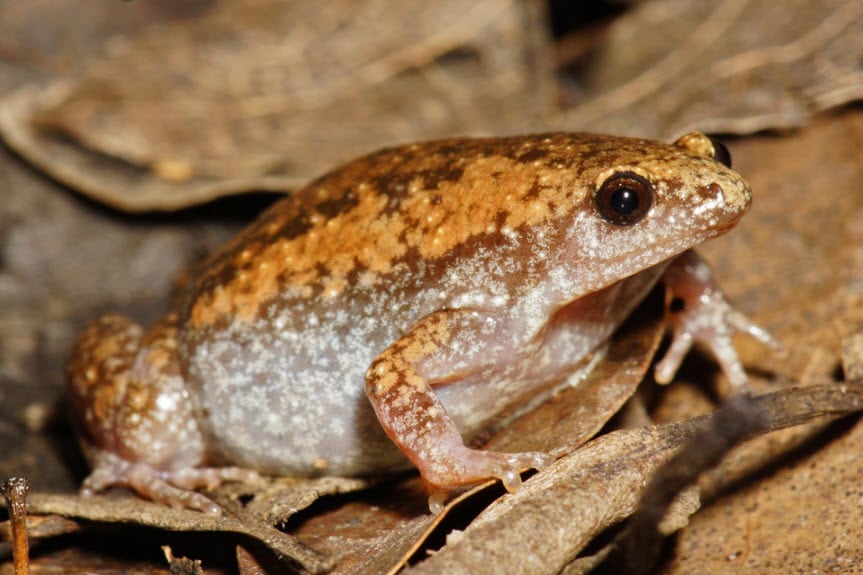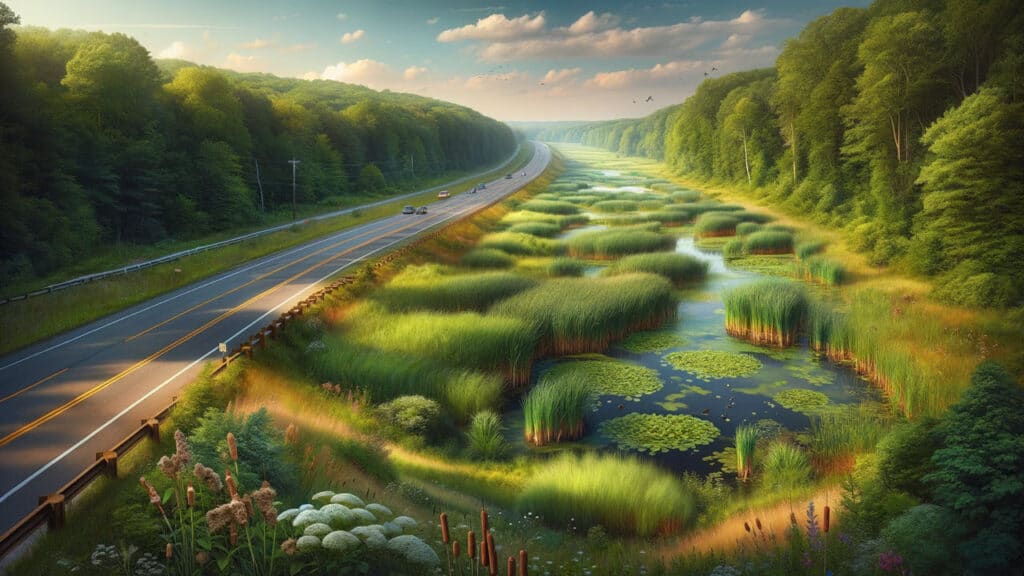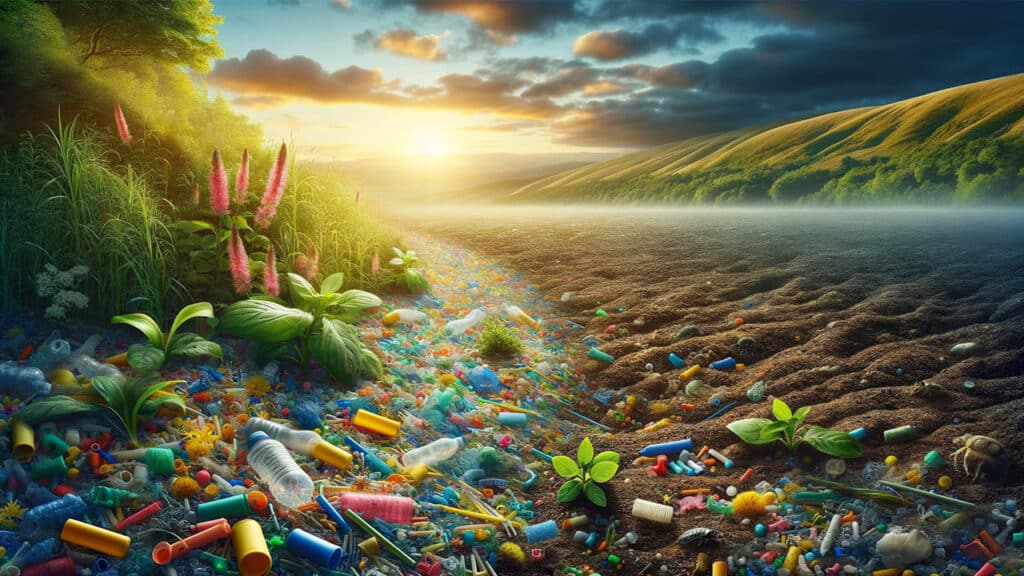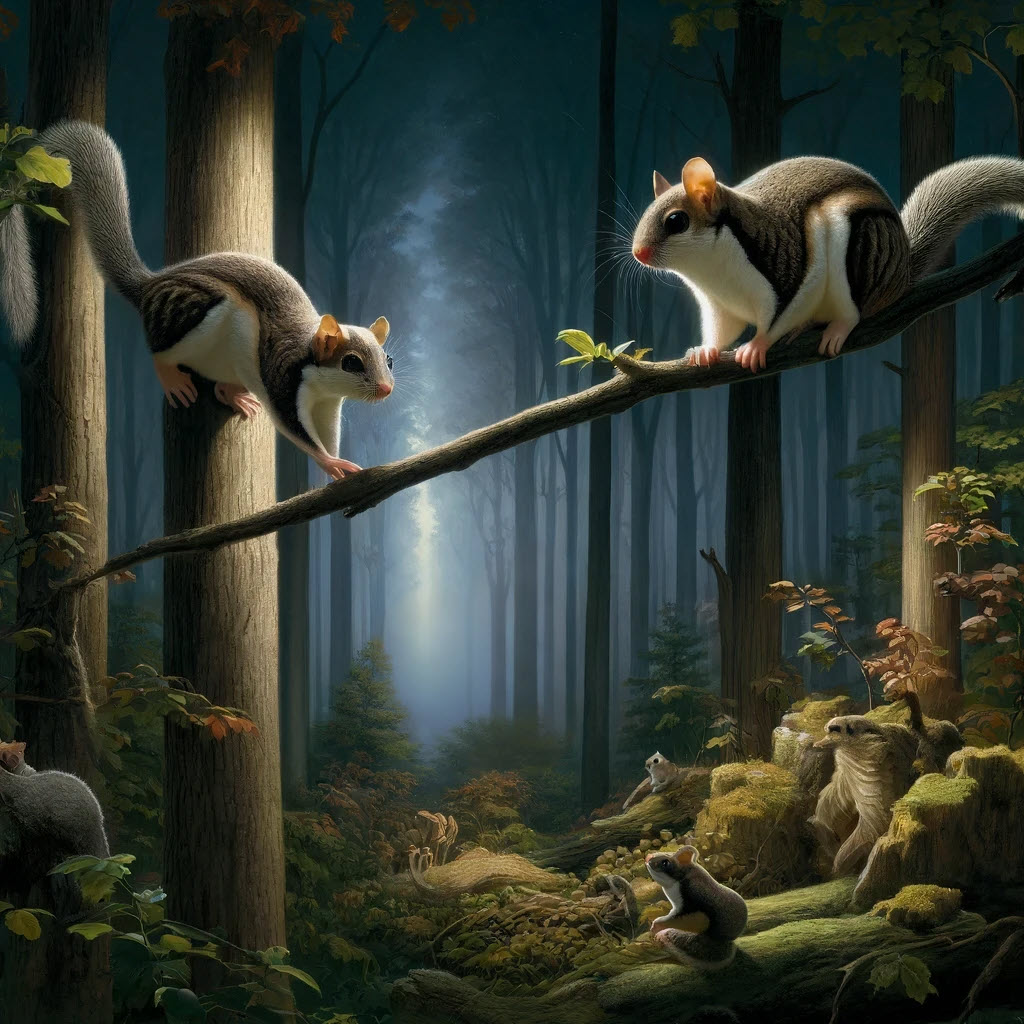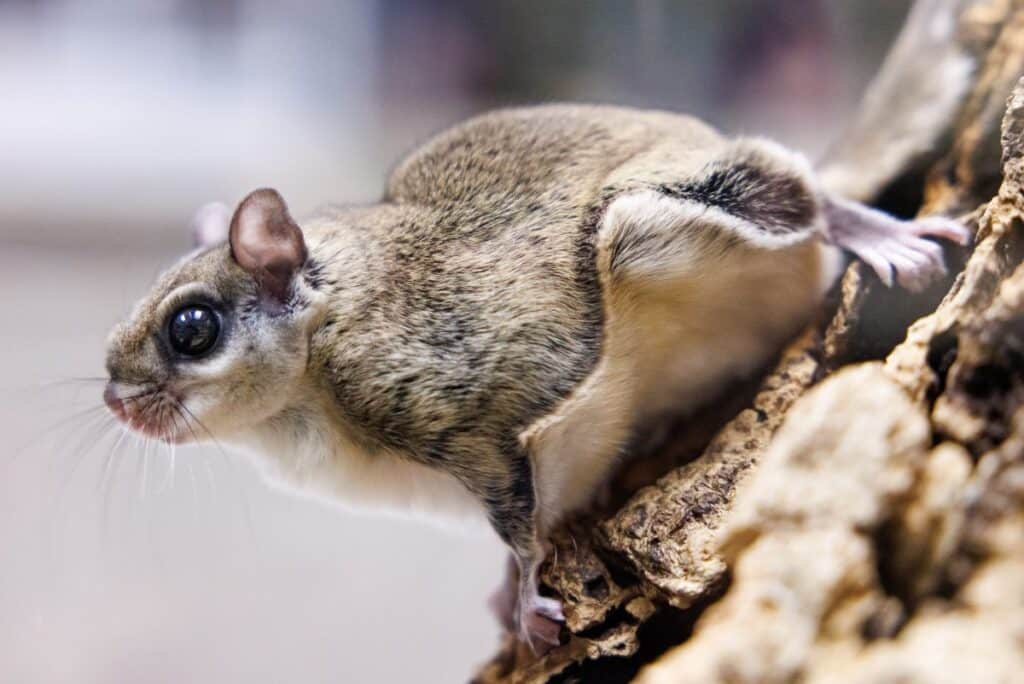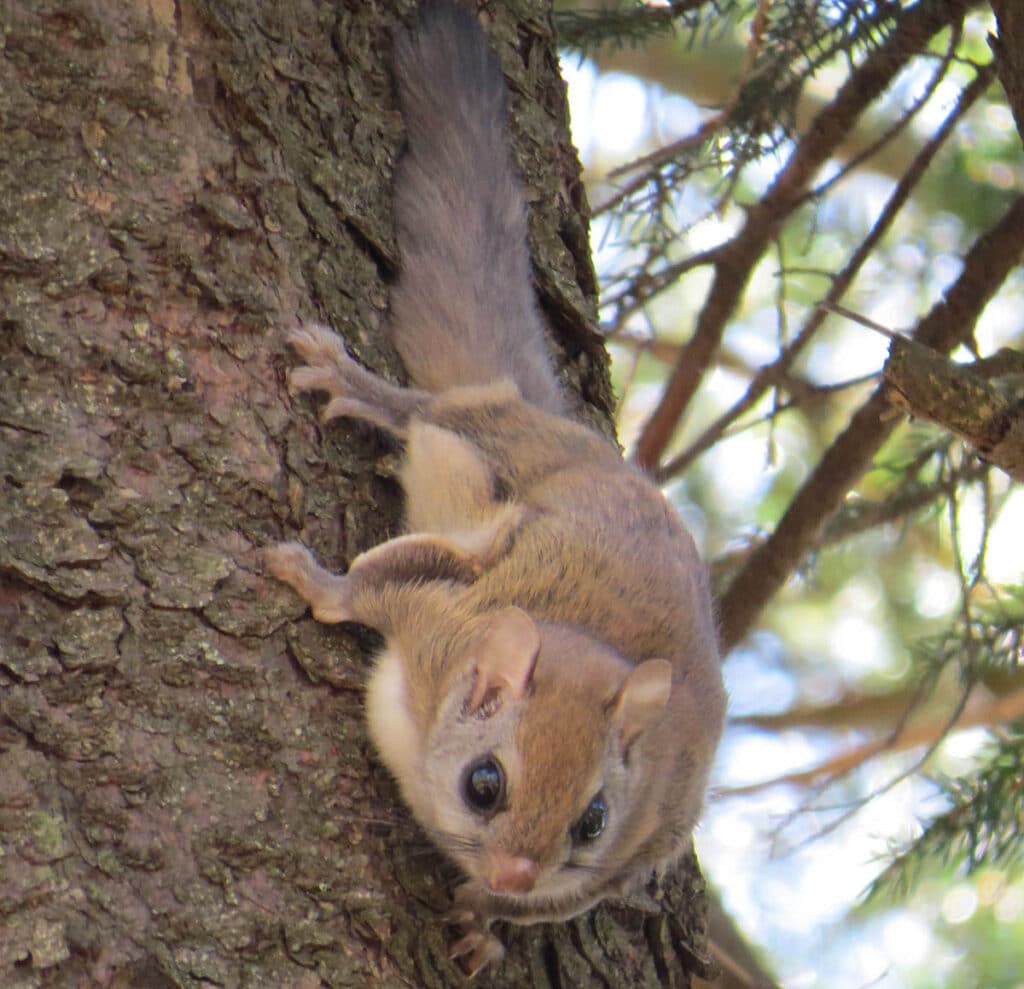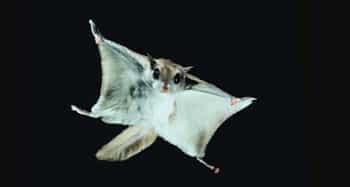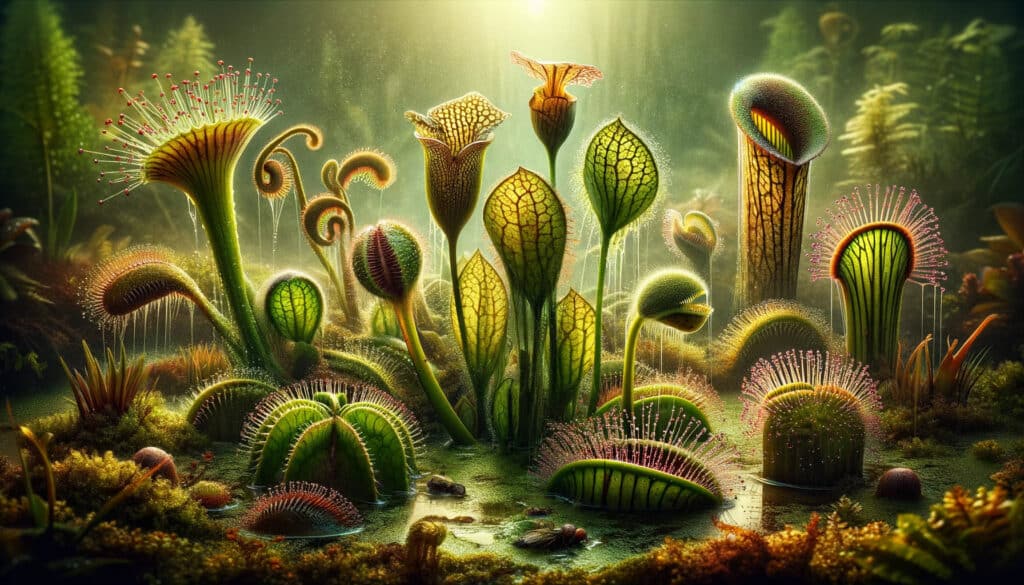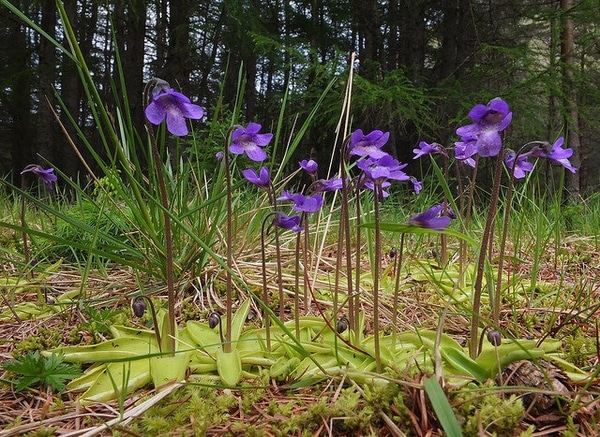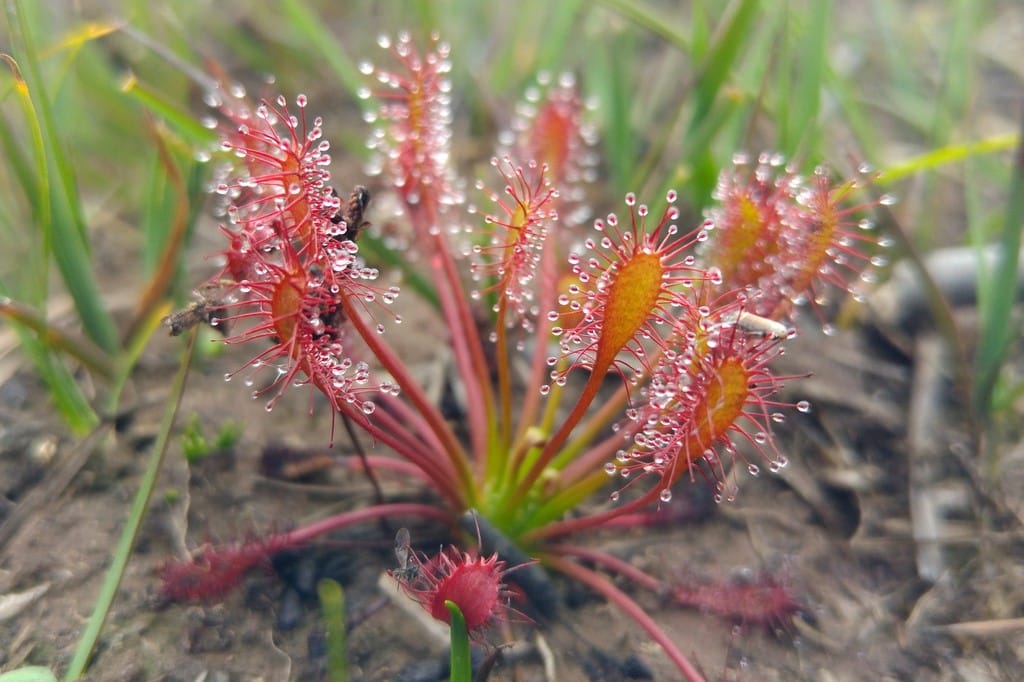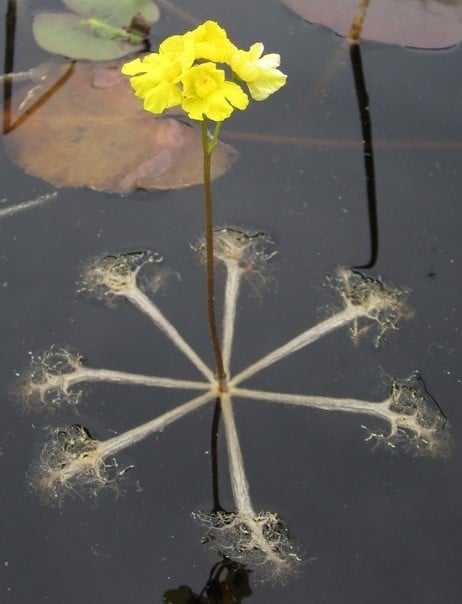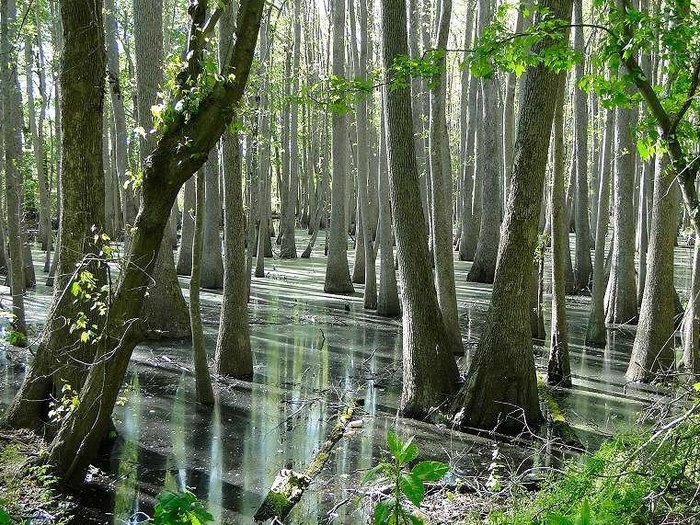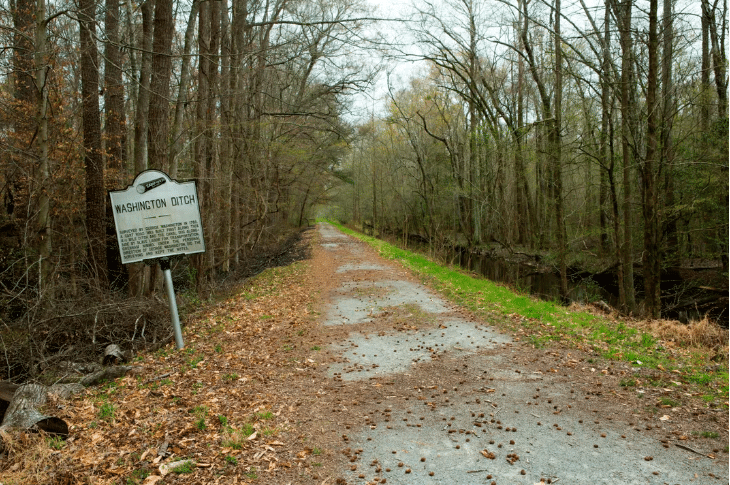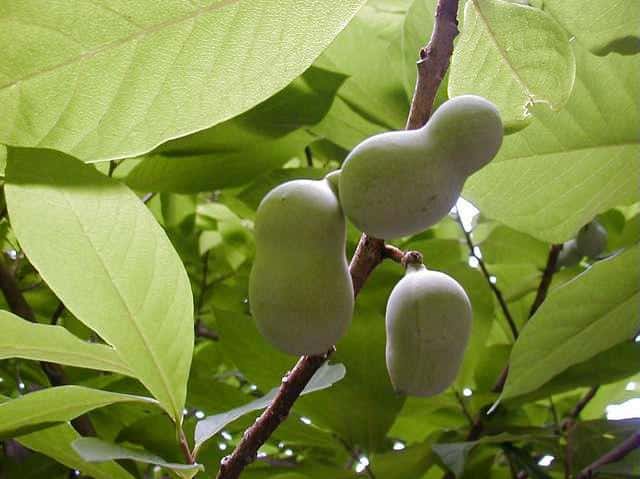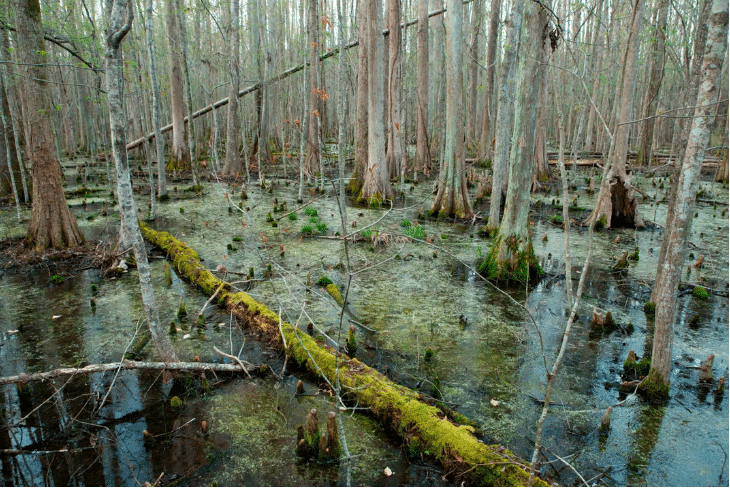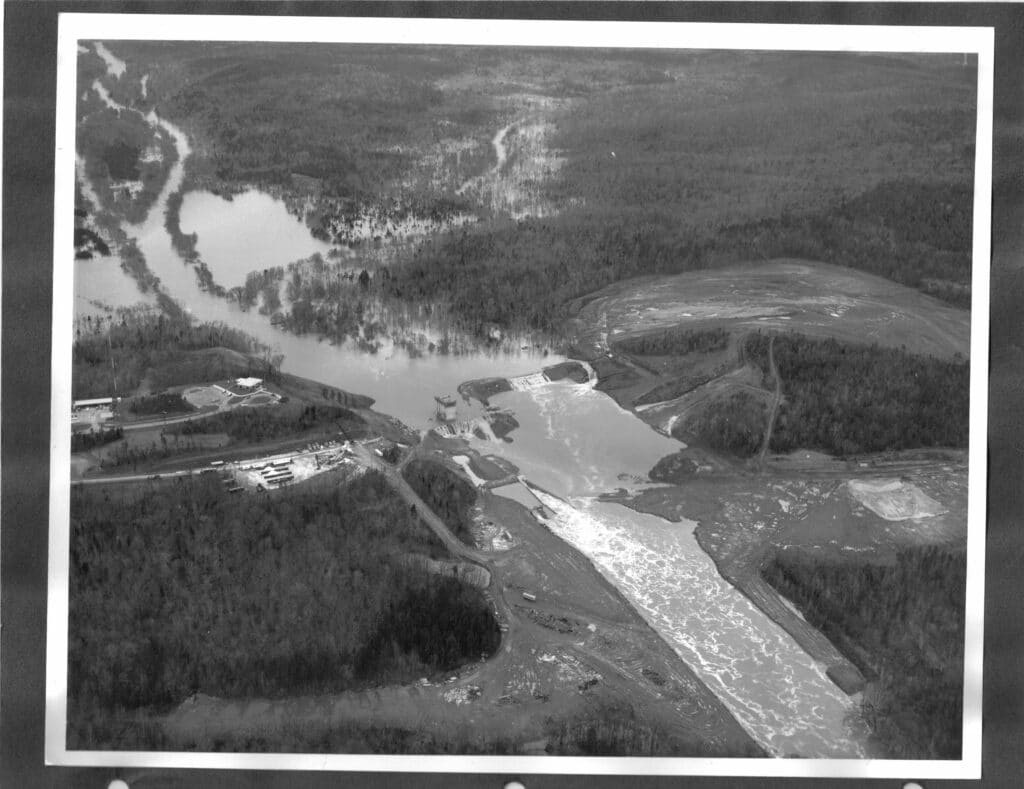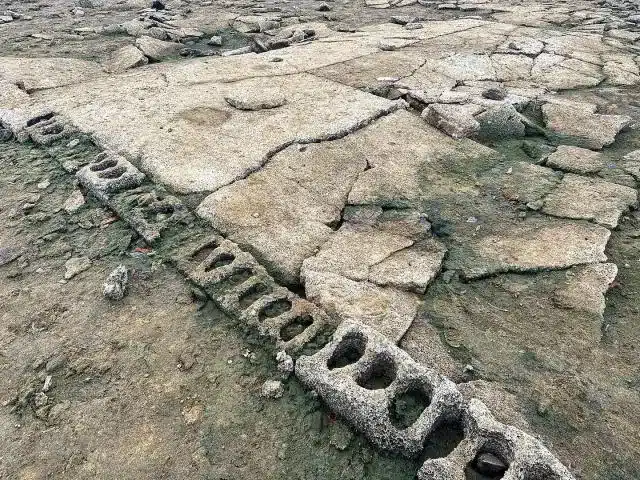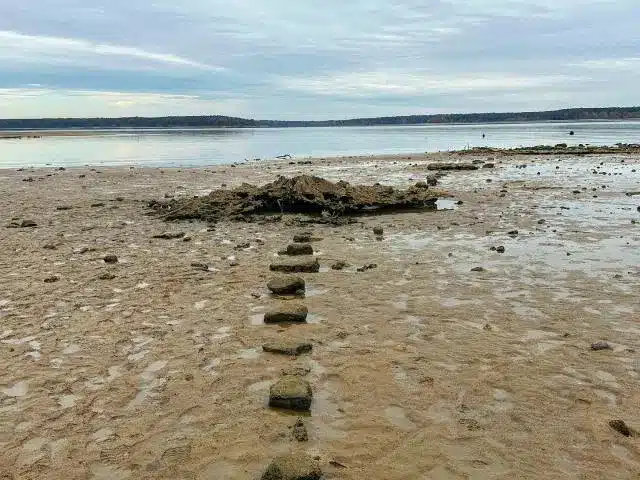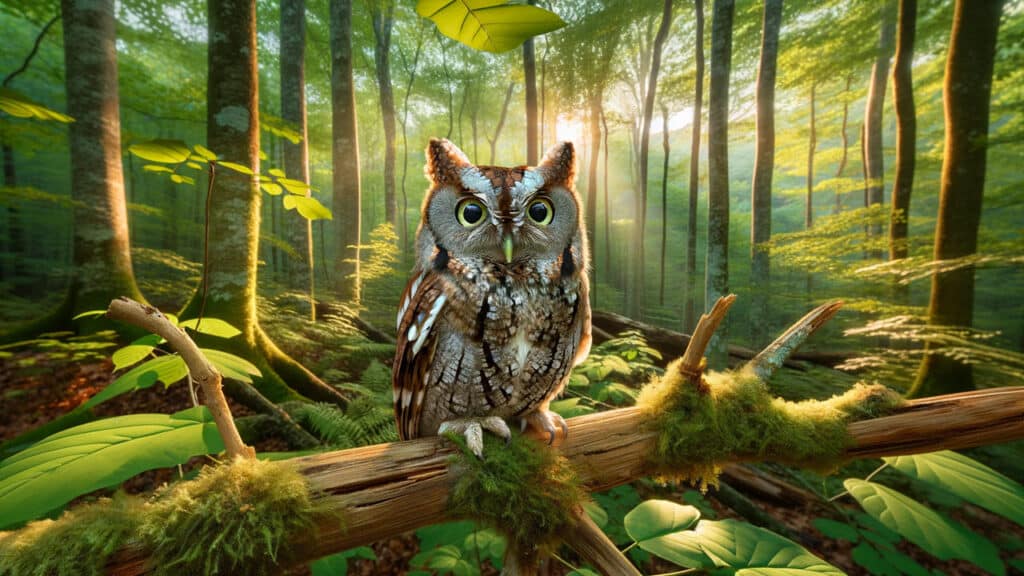
North Carolina is fortunate to have several owl species. Today, we will be discussing the Eastern Screech Owl, Megascops asio. Historically this species has been called many names, among them the Ghost Owl, the Squinch Owl, and Le Petit-Duc De L’est, or the Little Duke of the East, as reported in the beautifully illustrated volume The Owls of North America by Allan W. Eckert and Karl E. Karalus. Whatever you call it, this small, feathered predator weighs, on average, a mere 7.1 ounces and can come in red and gray varieties. Strictly nocturnal, their coloring provides excellent camouflage, making them difficult to spot in the wild, but if you are fortunate enough to catch a glimpse, you might have noticed their distinctive ear tufts. Many people, though, experience these birds’ calls without ever laying eyes on the birds themselves. While Eastern Screech Owls can produce some hair-raising screeches, their common calls are an even-pitched trill, or tremolo, and a shrill, descending whinny. Favoring open forest habitat, these small owls can be just as common in suburban areas as they are in the woods, taking shelter in tree hollows, building cavities, and constructed screech owl boxes.
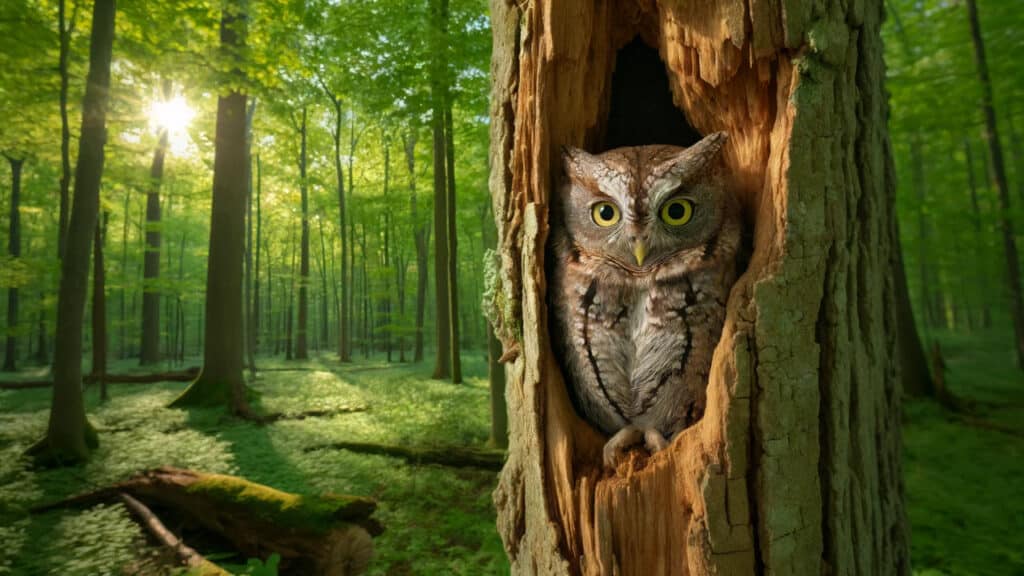
Come February, male owls will court the females with their calls while bobbing and swiveling their head at the same time. A tree hollow is found as the nest site, and the pair will not make any improvements to its condition, adding only the eggs they lay, the remains of food, regurgitated pellets, and droppings. While nests containing a whopping eight eggs have been reported, a female Eastern Screech Owl typically lays a clutch of five over a period of several days in March. Her mate will incubate the eggs while she leaves to drink water; if she is killed and never returns, the male will continue incubating the clutch and raise the baby owls until they are able to fend for themselves. Usually, though, the female does the majority of the incubating, with her mate bringing her food. The chicks, once they hatch, are covered in very fine, snowy white down; by the end of their second day out of the egg, they will begin to shiver uncontrollably, contributing to another moniker for this species, the Shivering Owl. It has been hypothesized that the young birds shiver because their downy fluff is not enough to keep the chill of the outside air out. The shivering lessens and eventually ceases by the end of their second week of life, by which time they are covered in thicker downy plumage that is either red or gray, signaling what color phase the young owls will be. At around four to five weeks old, the young owls begin to leave the nest, hanging out on close by branches and practicing their hunting techniques. By the end of August, the young strike out on their own, establishing their own territories a distance away.
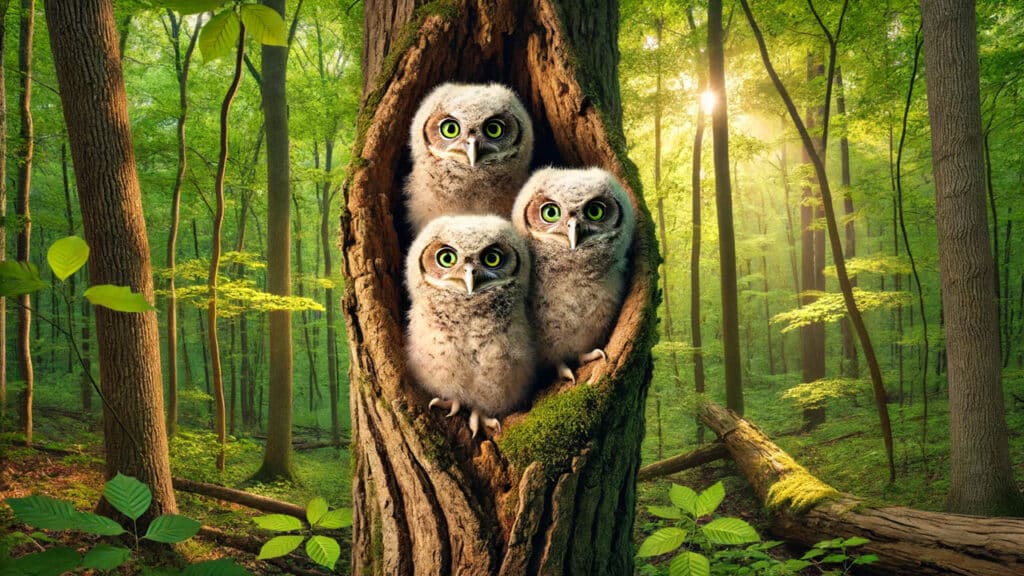
Due to their size, Eastern Screech Owls often fall prey to larger owls, including the Great Horned Owl (aka the Le Grand-Duc de L’est, or the Grand Duke of the East) and the Northern Barred Owl. Occasionally a screech owl may choose a snake for food that is too large, and in the ensuing conflict, the predator may end up becoming the prey. These weird and wonderful owls feast on small rodents, amphibians, and insects, with an occasional fish or aforementioned reptile rounding out their diet. These owls have been seen swooping in to catch moths drawn to streetlights; sadly, many are hit by cars as they dive in front of vehicles to catch prey. Humans are the main threat to Eastern Screech Owls, whether it be through vehicular collisions or through the destruction of habitats. This species of owl does use nesting boxes, so their numbers can be improved through the installation and maintenance of boxes. So, purchase one, or build your own, and set it up in your backyard. You might be fortunate enough to have a family of Eastern Screech Owls move in, serenading you with their tremolos, whinnies, and occasional screeches.
